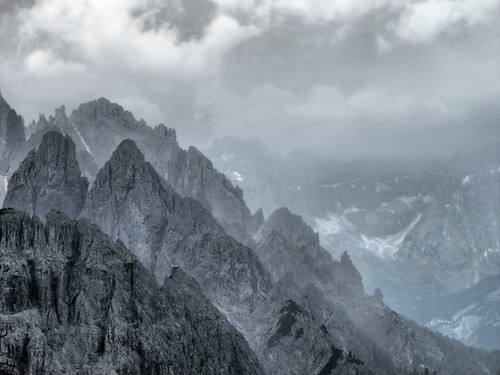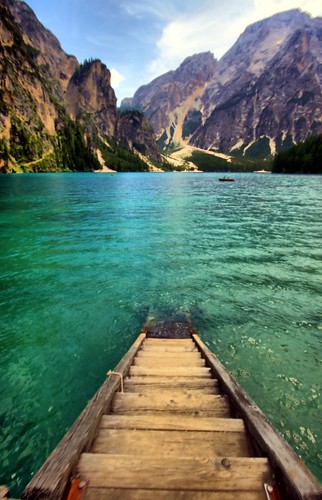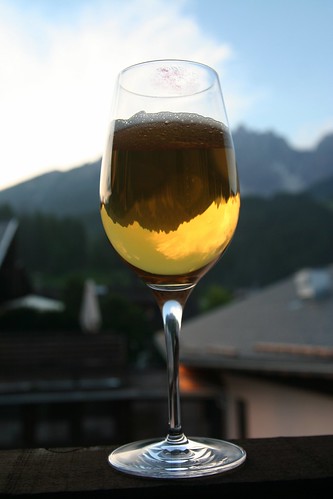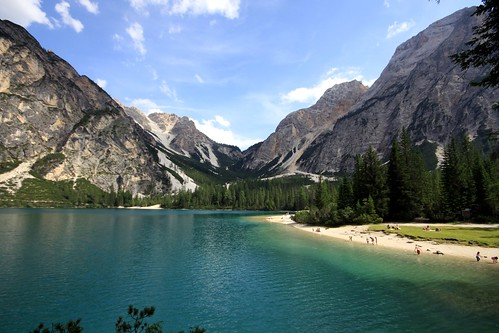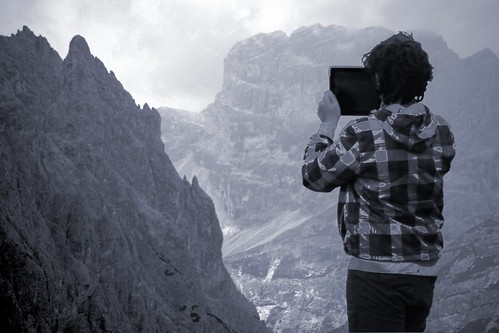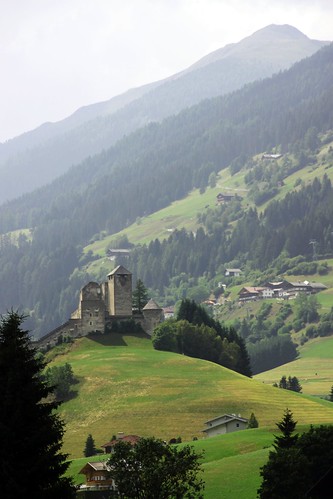taken in Biella near the main Post Office
© Angela M. Lobefaro All Rights Reserved © RIPRODUZIONE RISERVATA
27 July, 2012
Va tutto bene
Posted by
Angela Lobefaro
at
3:03:00 PM
0
comments
![]()
19 July, 2012
^^^^^^^^^^ | Lavaredo edition
© Angela M. Lobefaro All Rights Reserved © RIPRODUZIONE RISERVATA
The Tre Cime di Lavaredo (German: Drei Zinnen) are three distinctive battlement-like peaks, in the Sexten Dolomites of northeastern Italy. They are probably one of the best-known mountain groups in the Alps. The three peaks, from east to west, are:
Cima Piccola/Kleine Zinne ("little peak")
Cima Grande/Große Zinne ("big peak")
Cima Ovest/Westliche Zinne ("western peak").
The peaks are composed of well-layered dolostones of the Dolomia Principale (Hauptdolomit) formation, Carnian to Rhaetian in age, as are many other groups in the Dolomites (e.g., the Tofane, the Pelmo or the Cinque Torri).
Until 1919 the peaks formed part of the border between Italy and Austria. Now they lie on the border between the Italian provinces of Bolzano and Belluno and still are a part of the linguistic boundary between German-speaking and Italian-speaking majorities. The Cima Grande has an elevation of 2,999 metres (9,839 ft). It stands between the Cima Piccola, at 2,857 metres (9,373 ft), and the Cima Ovest, at 2,973 metres (9,754 ft).
en.wikipedia.org/wiki/Tre_Cime_di_Lavaredo
Posted by
Angela Lobefaro
at
7:17:00 PM
0
comments
![]()
14 July, 2012
Brrraies | Braies Lake
© Angela M. Lobefaro All Rights Reserved © RIPRODUZIONE RISERVATA
All rights reserved
en.wikipedia.org/wiki/Puster_Valley
Alta Val Pusteria, Alto Adige, Italia.
Posted by
Angela Lobefaro
at
4:03:00 PM
0
comments
![]()
11 July, 2012
09 July, 2012
Alpine Beach | Braies Lake
© Angela M. Lobefaro All Rights Reserved © RIPRODUZIONE RISERVATA
All rights reserved
en.wikipedia.org/wiki/Puster_Valley
Alta Val Pusteria, Alto Adige, Italia.
Posted by
Angela Lobefaro
at
10:03:00 PM
0
comments
![]()
06 July, 2012
Dolomites Nagzul | Lavaredo
© Angela M. Lobefaro All Rights Reserved © RIPRODUZIONE RISERVATA
The Tre Cime di Lavaredo (German: Drei Zinnen) are three distinctive battlement-like peaks, in the Sexten Dolomites of northeastern Italy. They are probably one of the best-known mountain groups in the Alps. The three peaks, from east to west, are:
Cima Piccola/Kleine Zinne ("little peak")
Cima Grande/Große Zinne ("big peak")
Cima Ovest/Westliche Zinne ("western peak").
The peaks are composed of well-layered dolostones of the Dolomia Principale (Hauptdolomit) formation, Carnian to Rhaetian in age, as are many other groups in the Dolomites (e.g., the Tofane, the Pelmo or the Cinque Torri).
Until 1919 the peaks formed part of the border between Italy and Austria. Now they lie on the border between the Italian provinces of Bolzano and Belluno and still are a part of the linguistic boundary between German-speaking and Italian-speaking majorities. The Cima Grande has an elevation of 2,999 metres (9,839 ft). It stands between the Cima Piccola, at 2,857 metres (9,373 ft), and the Cima Ovest, at 2,973 metres (9,754 ft).
en.wikipedia.org/wiki/Tre_Cime_di_Lavaredo
Posted by
Angela Lobefaro
at
10:37:00 AM
0
comments
![]()
Tre Cime | Drei Zinnen
© Angela M. Lobefaro All Rights Reserved © RIPRODUZIONE RISERVATA
The Tre Cime di Lavaredo (German: Drei Zinnen) are three distinctive battlement-like peaks, in the Sexten Dolomites of northeastern Italy. They are probably one of the best-known mountain groups in the Alps. The three peaks, from east to west, are:
Cima Piccola/Kleine Zinne ("little peak")
Cima Grande/Große Zinne ("big peak")
Cima Ovest/Westliche Zinne ("western peak").
The peaks are composed of well-layered dolostones of the Dolomia Principale (Hauptdolomit) formation, Carnian to Rhaetian in age, as are many other groups in the Dolomites (e.g., the Tofane, the Pelmo or the Cinque Torri).
Until 1919 the peaks formed part of the border between Italy and Austria. Now they lie on the border between the Italian provinces of Bolzano and Belluno and still are a part of the linguistic boundary between German-speaking and Italian-speaking majorities. The Cima Grande has an elevation of 2,999 metres (9,839 ft). It stands between the Cima Piccola, at 2,857 metres (9,373 ft), and the Cima Ovest, at 2,973 metres (9,754 ft).
en.wikipedia.org/wiki/Tre_Cime_di_Lavaredo
Posted by
Angela Lobefaro
at
7:27:00 AM
0
comments
![]()
04 July, 2012
Dolomites Atoll | Braies
© Angela M. Lobefaro All Rights Reserved © RIPRODUZIONE RISERVATA
All rights reserved
en.wikipedia.org/wiki/Puster_Valley
Alta Val Pusteria, Alto Adige, Italia.
Posted by
Angela Lobefaro
at
10:52:00 PM
0
comments
![]()
03 July, 2012
I-xplorer | Alta Val Pusteria
© Angela M. Lobefaro All Rights Reserved © RIPRODUZIONE RISERVATA
All rights reserved
en.wikipedia.org/wiki/Puster_Valley
Alta Val Pusteria, Alto Adige, Italia.
Posted by
Angela Lobefaro
at
10:30:00 PM
0
comments
![]()
02 July, 2012
Alta Val Pusteria
© Angela M. Lobefaro All Rights Reserved © RIPRODUZIONE RISERVATA
All rights reserved
en.wikipedia.org/wiki/Puster_Valley
Posted by
Angela Lobefaro
at
10:22:00 PM
0
comments
![]()
City of Shadows
taken in Berlin, Germany
© Angela M. Lobefaro All Rights Reserved © RIPRODUZIONE RISERVATA
All rights reserved
The Memorial to the Murdered Jews of Europe[1] (German: Denkmal für die ermordeten Juden Europas), also known as the Holocaust Memorial (German: Holocaust-Mahnmal), is a memorial in Berlin to the Jewish victims of the Holocaust, designed by architect Peter Eisenman and engineer Buro Happold. It consists of a 19,000 square metres (4.7 acres) site covered with 2,711 concrete slabs or "stelae", arranged in a grid pattern on a sloping field. The stelae are 2.38 m (7 ft 10 in) long, 0.95 m (3 ft 1 in) wide and vary in height from 0.2 to 4.8 m (8 in to 15 ft 9 in). According to Eisenman's project text, the stelae are designed to produce an uneasy, confusing atmosphere, and the whole sculpture aims to represent a supposedly ordered system that has lost touch with human reason. A 2005 copy of the Foundation for the Memorial's official English tourist pamphlet, however, states that the design represents a radical approach to the traditional concept of a memorial, partly because Eisenman did not use any symbolism. An attached underground "Place of Information" (German: Ort der Information) holds the names of all known Jewish Holocaust victims, obtained from the Israeli museum Yad Vashem.
Building began on April 1, 2003 and was finished on December 15, 2004. It was inaugurated on May 10, 2005, sixty years after the end of World War II, and opened to the public two days later. It is located one block south of the Brandenburg Gate, in the Friedrichstadt neighborhood. The cost of construction was approximately €25 million.
The memorial is controversial, and was described by Ignatz Bubis, the then leader of the German Jewish community, as unnecessary.
en.wikipedia.org/wiki/Memorial_to_the_Murdered_Jews_of_Eu...
Posted by
Angela Lobefaro
at
12:11:00 PM
0
comments
![]()
01 July, 2012
The Sky over Berlin ....
© Angela M. Lobefaro
All Rights Reserved
© RIPRODUZIONE RISERVATA
Posted by
Angela Lobefaro
at
11:53:00 PM
0
comments
![]()

